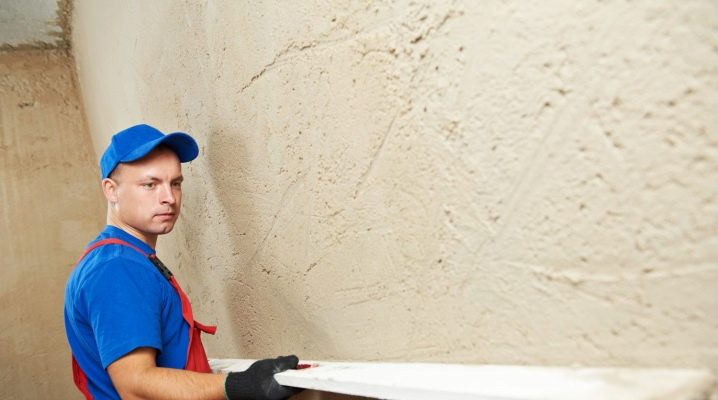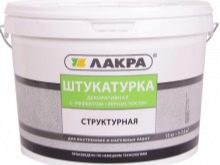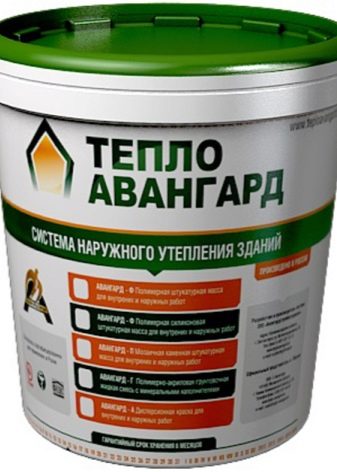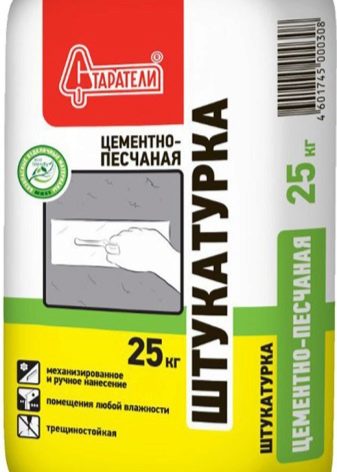Plaster mortar: composition and preparation

Plaster is a rough finish of walls and ceilings, as well as the facade of a building. After its application, all other work begins. You can do it yourself or invite specialists for this.
This stage of repair is important in that the plastering protects the surfaces. Especially do not hesitate to finish the facade, as it is more vulnerable to external influences.
Despite the laboriousness of the work and the long drying time of the coating, plastering is a classic method of interior decoration.



Peculiarities
With the help of plaster, you can embody a variety of design solutions, make surfaces from imitations of various textures and materials. It is suitable for all types of surfaces - from brick to wood.



For interior work, plaster is subdivided into:
- structural - differs in heterogeneity and gives relief;
- textured - differs in the granularity of the materials, gives a different texture, for example, under a stone, wood or sand;
- decorative - gives the effect of painting, ennobles the appearance of the surface;
- stone - creates an original drawing;
- latex artificial plaster - resistant to mechanical damage.



External plaster can also create an attractive appearance for a building, but its main function is to strengthen the walls and protect them from destruction. Most often it is applied in several layers.
The features of this type of finish also include an increase in thermal insulation and sound insulation, smoothing and elimination of surface defects, water and fire resistance of the surface.


Most often, cement and gypsum mortars are used for plastering. They are characterized by relatively low cost and quick drying.
To facilitate the work, you can use special plastering stations, since plastering is a rather complex process that requires effort. This saves not only time but also materials. The plastering station allows you to process a large area in one go, which does not require further processing.


Primary requirements
Due to the fact that plaster is the basis for subsequent work, many requirements are imposed on it. The quality of the mortar is determined by its strength, plasticity, good adhesion and optimal consistency.
It is necessary to pay attention to the composition and proportions of materials. The scope of application of plaster solutions and their function depends on this. Also, the most important indicators are water resistance and fire resistance.



The strength and durability of the coating is influenced not only by the composition of the solution, but also by the quality of surface preparation. On concrete surfaces, protrusions and holes are sealed, cleaned with special brushes. If necessary, lay a metal mesh, and before applying the plaster, the surface is slightly moistened with water.
Brick walls also need to be cleaned and leveled. Before finishing metal surfaces, make sure that there is no rust. It is recommended to finish wooden surfaces with shingles or special shields. Shingles are thin wooden boards made in the form of a grid.


Types of mixtures
There are basic types of solutions and combined ones.
The main ones are:
- cement (the most durable);
- clay (reusable);
- calcareous (increase plasticity and adhesion);
- gypsum (fast drying).


Almost always, for the preparation of solutions, river sand is added to the main material, which has a positive effect on the strength of the finished composition and does not require cleaning.
Combined mortars consist of several basic materials and thus improve the properties of the plaster.
Cement plaster is very heavy and is a little difficult to work with. Despite this disadvantage, the cement mixture provides a long service life, strength and water resistance. Cement plaster consists of natural materials, therefore it is considered safe and environmentally friendly.


Long-term drying of the material is both an advantage and a disadvantage. In the first case, it is possible to immediately prepare a large amount of solution, and in the second, it becomes necessary to wait a long time for the plaster to completely dry (approximately 10-14 days) for subsequent work.


It is important to monitor the amount of sand added to the solution., as it can reduce the adhesion of the mixture.
Cement-lime plaster is renamed if it is necessary to obtain a more durable composition. However, the main thing in this case is not to overdo it, since a large amount of lime will give the opposite effect - the plaster can become cracked. The ideal ratio of lime to cement mixture is 1: 3.


Cement-lime mortar is used for interior decoration of a building and for facade decoration.
Lime-gypsum plaster is used for finishing rooms with medium humidity (not suitable for a bathroom) with walls made of stone, wood and other materials.
It is important to take into account the moment that gypsum hardens very quickly. (about 10-15 minutes), so the solution is prepared in small portions. It is not necessary to dilute the solution into the hardened gypsum - on the contrary, it will lead to a loss of strength and adhesion. It is also advisable to divide the surfaces into small sections and plaster them one by one.



Clay plaster is the oldest finishing material. Working with it can take a long time, because the clay must first be prepared. This type of plaster is used for rooms with very low humidity. Lime (for greater plasticity), cement (to increase strength) or gypsum (for quick drying) are often added to the clay mixture.
The main distinguishing feature of clay plaster from other types is the ability to dilute with water when fully hardened. Thus, if too much mortar was prepared and it froze, then water can be added to it again and used for surface finishing. At the same time, the quality of work will not be affected.



Gypsum plaster, with such advantages as light weight, ease of application and high strength, has one drawback - the lack of water resistance. For a short curing time, you can change the recipe of the gypsum solution by adding tile or PVA glue to it.
Decorative (terrazite) plaster is mainly used for the decoration of facades, sometimes for corridors. The possible composition of such a plaster is very extensive, but cement and color pigments are almost always used. To obtain various imitations, special additives and the use of the necessary tools for finishing are needed.


Terrazzite plaster is distinguished by the level of granularity, which depends on the filler fraction:
- fine-grained - fraction up to 2 mm;
- medium-grained - 2-4 mm;
- coarse - 4-6 mm.


Any plaster contains filler, water and binder.
The proportions of these elements in the composition of the solution also depend on the type of work:
- splashing;
- primer layer;
- finishing layer.

The least amount of binder is used for spraying, and more for the finishing layer.This is the reason for the high strength of the finishing material.
Plastering can be carried out in all three layers, as well as in only one. For each method, individual proportions are selected. Clay formulations always contain less of this material.

If you want to improve certain properties of the plaster, you can purchase special additives. For example, plasticizers increase the plasticity of the mixture and provide an even coating, prevent delamination. They are also able to reduce the amount of water required.
In the cold season, additives with anti-frost properties will help carry out finishing work so that they will not allow the solution to freeze. Quartz sand increases resistance to acids, mica protects from ultraviolet radiation. Metal shavings are rarely used due to their corrosive properties, but they increase the strength of the coating.


If it is necessary to increase the adhesion or shorten the curing time, then the appropriate additive can be found without any problems.

There is also a wide range of decorative additives:
- marble chips are used to create a Venetian style;
- flocks (colored pieces of acrylic) give the effect of a suede coating;
- wax and resin additives are used to imitate stone and silk.


The main rule when using additives is their amount, which in the solution should not exceed 10% of the main volume. Some additives can be added to the solution using a syringe.
The difference between plaster and ordinary putty is that the putty is a finishing finish and hides the defects that were made during plastering.

How to cook?
To prepare a plaster solution, you must use the following tools:
- container for materials;
- concrete mixer (can be replaced with a mixer or shovel);
- astringent, aggregate and water;
- dispenser.


To prepare cement plaster, you first need to sift the sand and clean it of debris and lumps. Then mix dry cement and sand thoroughly. To do this, use a concrete mixer or mixer. As soon as the elements become a homogeneous mass, you can gradually add water, gently continuing to stir. The finished composition should acquire the state of thick sour cream.

In terms of fat content, the mixture is distinguished into:
- fatty (strong stickiness);
- normal;
- skinny (no stickiness).

A high-quality mixture should be distinguished by uniformity of composition and normal fat content.
To prepare a clay solution, it is necessary to soak the alumina in water for several hours, and then knead it so that there are no lumps. Then add sawdust to the clay. In the end, the alumina should be thick enough. To achieve this result, it is necessary to constantly stir the mixture and add a little water.
To completely get rid of lumps and debris, you can wipe the solution with a sieve. After these steps, sifted sand is added. But such a mixture will not have sufficient strength, therefore, cement, lime or gypsum is additionally added to it.


To prepare lime-based plaster, only slaked substance must be used. First, this material is mixed with water, and then sand is gradually added.
The dryness of the plaster can be determined by the color change from grayish to white. The finished mixture in the container can be stored for about three days, but it is not recommended to delay its application, because over time the solution begins to lose its plasticity.
If the lime is quicklime, then slaking must be done. For this, dry lime is diluted with cold water. It is important to use a large container as quenching is a violent reaction. Safety glasses and clothing may be required. Lime in this state should stand for about two weeks.


To create a lime-gypsum mortar, it is necessary to add gypsum to the water and stir until smooth. Then lime is added. It is advisable to perform all preparation steps quickly, since the gypsum dries quickly.

Cement-lime plaster can be prepared with your own hands in two ways:
- In dry form, cement and sand are mixed, then you can dilute them with milk of lime, purified using a sieve. All elements are thoroughly mixed.
- First, lime, sand and water are mixed, and only then cement is added. Also, the resulting mass is mixed.


Decorative plaster can be made of any binding materials, but with the obligatory addition of decorative additives and color pigments.


The recipes for preparing solutions are not very different, but the characteristics of the materials used are taken into account.
To prepare the solution yourself, you must perform the following steps:
- all dry plastering materials must first be sieved and completely cleaned;
- to be sure of the homogeneity of the resulting composition, it is advisable to strain it;
- the proportions of materials in the composition are regulated by the type of work (spraying, priming or finishing).

Currently, you can purchase ready-made dry mixes that only need to be diluted with water. They are good because they have a professional and specialized composition, contain various additives to enhance strength and ductility.

Possible mistakes
The quality of the final plaster depends on the correct preparation of the composition and compliance with the proportions of the materials. Errors can result in surface cracks, flaking, and swelling.
Poor mixing of the solution leads to cracks due to the high concentration of a binder or aggregate in one area. Cracks also appear from exposure to too low or high temperatures, drafts. Therefore, after applying the plaster, it is best to close all windows and doors.


A new layer can be applied only after the previous one has completely dried.
There is a misconception that if you add more cement, the strength of the mortar will increase. But this is not true. Of course, the solution will become denser, but when it dries, cracks will quickly form on the surface.
Make sure the surface is completely dry before applying the plaster. Otherwise, the coating will not adhere well and will peel off quickly. But even the overdried surface will not hold the coating. It is also not recommended to make too thin or thick layers.

For a better fixation of the plaster mixture, it is worth making sure that the surface is sufficiently rough. If you apply layers of different thicknesses, then after drying it will be noticeable by the uneven color of the surface due to the different duration of the drying time.
The strength is influenced by the amount of binder and the absence of contamination in the materials. Do not use gypsum plaster for concrete surfaces, this can lead to surface destruction. Also, it is not recommended to apply a lime mixture on gypsum.


Advice
Although it is not recommended to influence the self-drying time of the plaster, if you ensure good air exchange in the room, the likelihood of defects is reduced.
It is better to moisten the surface before plastering the brick.as this material has good moisture absorption. Before finishing work, it is necessary to completely remove any surface contamination so that the mortar adheres better. Do not forget about preparing for plastering the facade - if there are reinforced concrete beams, they are covered with clay fired in a kiln.

For exterior decoration, it is undesirable to use gypsum plaster, since it is deformed under the influence of rain or snow. To obtain a perfectly flat surface, you can install beacons on the surface.To do this, first you need to check the verticality of the wall, and then drive in the dowels in the right places and stretch the fishing line along them. To avoid a break, it is necessary to pull the line between the extreme beacons.
To correct uneven corners, an additional layer of plaster is applied. If the unevenness is too large, then first completely knock down the layer of plaster and reapply it.
It is best to carry out plastering in spring or autumn, when there is no hot sun or severe frosts. Surfaces can be protected from the sun with a special protective canopy.

A thick layer of mortar may crack, but if necessary, stretch a metal reinforcing mesh before applying it. It is advisable to carry out all installation work before plastering, so as not to damage the coating or pipes (wires). Elements of communications are placed in special recesses in the wall and covered with plaster. Do not leave heating pipes close to the plaster, as when heated they expand and the coating collapses, and rust spots may appear due to the ability of gypsum to absorb moisture.
The surfaces must be completely free of dust, otherwise the plaster will not adhere properly to them.

How to mix the solution onto the plaster, see the video below.













The comment was sent successfully.